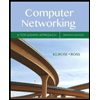
Computer Networking: A Top-Down Approach (7th Edition)
7th Edition
ISBN: 9780133594140
Author: James Kurose, Keith Ross
Publisher: PEARSON
expand_more
expand_more
format_list_bulleted
Question
![a. Given the variables valuesArray and arrayPtr defined below, assign the variable arravPtr to the
valuesArray and do pointer arithmetic to print out (using a cout statement) each element of
valuesArray.
int valuesArray[3] = {66, 23, 92};
int *arrayPtrị
b. The address of valuesArrav[0] is Ox7ffc125d3e20. What is the address of these elements of the array?
valuesArray[1] address is:
valuesArray[2] address is:
ww m me](https://content.bartleby.com/qna-images/question/2212bbb4-b77b-4ea4-b1ba-a9d43923c95b/ea8f6d54-32ee-4fec-b3a7-ee2d63de64f3/0e6d61g_thumbnail.png)
Transcribed Image Text:a. Given the variables valuesArray and arrayPtr defined below, assign the variable arravPtr to the
valuesArray and do pointer arithmetic to print out (using a cout statement) each element of
valuesArray.
int valuesArray[3] = {66, 23, 92};
int *arrayPtrị
b. The address of valuesArrav[0] is Ox7ffc125d3e20. What is the address of these elements of the array?
valuesArray[1] address is:
valuesArray[2] address is:
ww m me
Expert Solution
This question has been solved!
Explore an expertly crafted, step-by-step solution for a thorough understanding of key concepts.
Step by stepSolved in 5 steps with 1 images

Knowledge Booster
Similar questions
- If the input is negative, make numltemsPointer be null. Otherwise, make numltems Pointer point to numltems and multiply the value to which numltems Pointer points by 10. Ex: If the user enters 99, the output should be: Items: 990 406554.2871636.qx3zqy7 1 #include 2 using namespace std; 3 4 int main() { 5 6 7 8 9 10 11 12 13 14 15 16 17 int numItems Pointer; int numItems; cin >> numItems; /* Your solution goes here */ if (numItems Pointer == nullptr) { cout << "Items is negative" << endl; } else { cout << "Items: << *numItemsPointer << endl; } || 1 test passed All tests passedarrow_forwardWrite three functions for: mean, remove, display //include any standard libraries needed // - passes in an array along with the size of the array // - returns the mean of all values stored in the array double mean( const double array [ ], int arraySize); // - Passes in an array, the size of the array by reference, and the index of a value to be removed from the array. // - Removes the value at this index by shifting all of the values after this value up, keeping the same relative order of all values not removed. // - Refuces arraySize by 1. void remove (double array[], not &arraySize, int index); // - Passes in an array and the size of the array. // - outputs each value in the array separated by a comma and space, with mo comma, space or beeline at the end. void display (const double array[], int arraySize); const int ARR_CAP = 100; int main (int argc, char *argv[]){// verify file name provided on command line // open file and verify it opened // declare an array of doubles of…arrow_forwardHow difficult is it to duplicate a collection of shared pointers into another array while using the C++ programming language? Create a list of the several approaches you may use to tackle the issue that has been presented to you. Is it the case that copying a shared pointer also copies the objects that it controls? Explainarrow_forward
- What is a pointer? How do you dereference a pointer to get its stored value?arrow_forwardIn C++ Create an array of head pointers, statically allocated of size 101 of that type: Now, create a pointer that can point to the first element: Show how to dynamically allocate an array of 101 elements of head pointers: Write the code to initialize each element to NULL: Rewrite the code to initialize each element to NULL using pointer arithmetic:arrow_forwardWhat is a way to safely dereference a pointer?arrow_forward
- Please create an array (called intArr) of type int that contains 25 elements. Then create a pointer (pointer2Arr) to the array.arrow_forwardIn order to declare a pointer, the ""&"" (ampersand) symbol is used." True Falsearrow_forwardWhat does the phrase "base address of an array" relate to, and how does it come to be utilized in a call to a function?arrow_forward
arrow_back_ios
arrow_forward_ios
Recommended textbooks for you
 Computer Networking: A Top-Down Approach (7th Edi...Computer EngineeringISBN:9780133594140Author:James Kurose, Keith RossPublisher:PEARSON
Computer Networking: A Top-Down Approach (7th Edi...Computer EngineeringISBN:9780133594140Author:James Kurose, Keith RossPublisher:PEARSON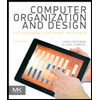 Computer Organization and Design MIPS Edition, Fi...Computer EngineeringISBN:9780124077263Author:David A. Patterson, John L. HennessyPublisher:Elsevier Science
Computer Organization and Design MIPS Edition, Fi...Computer EngineeringISBN:9780124077263Author:David A. Patterson, John L. HennessyPublisher:Elsevier Science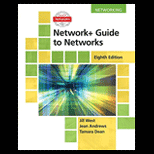 Network+ Guide to Networks (MindTap Course List)Computer EngineeringISBN:9781337569330Author:Jill West, Tamara Dean, Jean AndrewsPublisher:Cengage Learning
Network+ Guide to Networks (MindTap Course List)Computer EngineeringISBN:9781337569330Author:Jill West, Tamara Dean, Jean AndrewsPublisher:Cengage Learning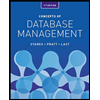 Concepts of Database ManagementComputer EngineeringISBN:9781337093422Author:Joy L. Starks, Philip J. Pratt, Mary Z. LastPublisher:Cengage Learning
Concepts of Database ManagementComputer EngineeringISBN:9781337093422Author:Joy L. Starks, Philip J. Pratt, Mary Z. LastPublisher:Cengage Learning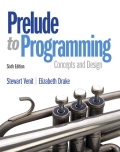 Prelude to ProgrammingComputer EngineeringISBN:9780133750423Author:VENIT, StewartPublisher:Pearson Education
Prelude to ProgrammingComputer EngineeringISBN:9780133750423Author:VENIT, StewartPublisher:Pearson Education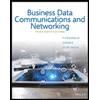 Sc Business Data Communications and Networking, T...Computer EngineeringISBN:9781119368830Author:FITZGERALDPublisher:WILEY
Sc Business Data Communications and Networking, T...Computer EngineeringISBN:9781119368830Author:FITZGERALDPublisher:WILEY

Computer Networking: A Top-Down Approach (7th Edi...
Computer Engineering
ISBN:9780133594140
Author:James Kurose, Keith Ross
Publisher:PEARSON

Computer Organization and Design MIPS Edition, Fi...
Computer Engineering
ISBN:9780124077263
Author:David A. Patterson, John L. Hennessy
Publisher:Elsevier Science

Network+ Guide to Networks (MindTap Course List)
Computer Engineering
ISBN:9781337569330
Author:Jill West, Tamara Dean, Jean Andrews
Publisher:Cengage Learning

Concepts of Database Management
Computer Engineering
ISBN:9781337093422
Author:Joy L. Starks, Philip J. Pratt, Mary Z. Last
Publisher:Cengage Learning

Prelude to Programming
Computer Engineering
ISBN:9780133750423
Author:VENIT, Stewart
Publisher:Pearson Education

Sc Business Data Communications and Networking, T...
Computer Engineering
ISBN:9781119368830
Author:FITZGERALD
Publisher:WILEY